Wherever you are coming from; the only way you can get there is to follow your heart
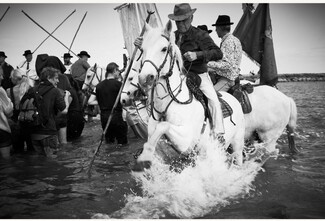
Kerensa Smith reports from Saintes-Maries-del-la-Mer on Saint Sara e Kali day – and has a surprise encounter on the way home. Photographs by Debbie Todd and Artúr Čonka
As spring turns to summer, thousands of Romanies head to Saintes-Maries-del-la-Mer in the south of France to honour their patron saint Sara e Kali. Wherever you are coming from; the only way you can get there is to follow your heart.
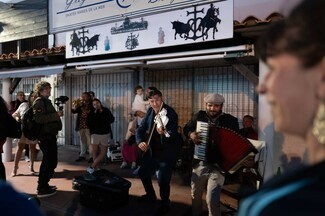
Caravans and wagons are parked up beside the marsh and along the seafront. The church of Notre Dame de la Mer dominates the town, in the past, it has been used as a fortress to fend off invading Saracen pirates.
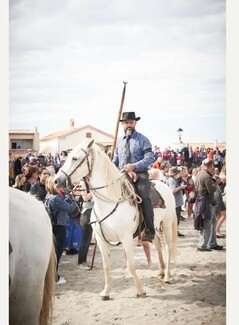
The streets are alive with music, dancing and feasting. Ladies hustle in the crowd selling Sara e Kali pins. A tall dark man plays a white violin; he is the best there’s ever been (see video below).
Festivities carry on late - but not too late as tomorrow is the 24th of May. The next morning pilgrims and tourists will flock to the streets and Mass is served to a full congregation. The Romany Market has handmade arts and crafts, it’s also a place for Romani gold traders to deal.
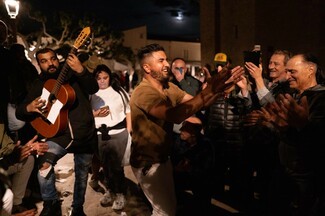
Respected Romani matriarch Petra van Esch and her daughter Kali are on the market buying Saint Sara regalia. Travelling with them is Room-Katholic Justic Pastor for Romany and Travellers, Lydia Verhagen. Together they are working via the chaplains of the institutional churches, to bring Saint Sara - who is the Saint who can see the unseen - into the prisons around Holland to help those serving time.
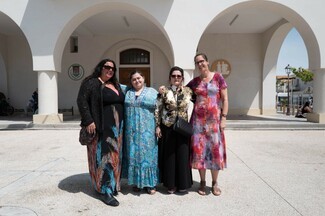
Kali Van Esch has been a part of this pilgrimage since she was a baby. Her grandmother lived in Saintes-Maries-del-la-Mer and was also named Kali as she was so dark. In those days the roads were just dirt tracks. There were no restrictions and they camped in the town centre, with their horses.
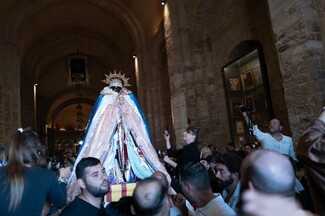
It’s a busy event these days. Amongst the masses is the well-travelled London based Roma photographer and producer Artúr Čonka. Artur’s award-winning work captures the life of the Roma across Europe. On this occasion he is presenting a program for Heart and Soul BBC World Radio about Sara e Kali and the pilgrimage.
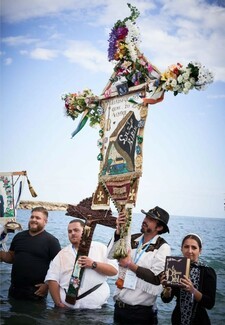
The church bells ring as tourists stand behind crowd barriers, and the Romanies are at the doors of the church whilst men on white horses wait patiently. "Viva Sainte Marie, viva Sainte Sara," is the melodic chant from the crowd. After hours in the hot sun waiting in anticipation, Saint Sara hits the streets, held high above her adoring people, wearing a cloak as blue as the heavens and a halo of gold above her crown, slowly moving through the crowd as followers touch the hem of her dress.
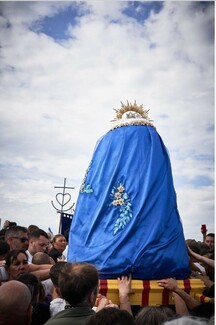
The horses stride into the ocean and stand in formation. Sara e Kali Reine de Gitanos, carried by the faith of the faithful into the sea and immersed for purification, the pilgrims submerse themselves while respectably clothed. Saint Sara is then carried back to her crypt where the heat from a thousand candles is a welcome warmth.
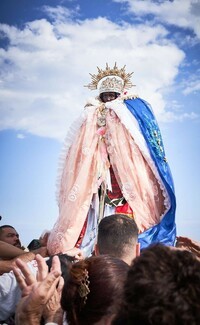
The following day after mass the statues of Mary Jacobe and Mary Salome (the Virgin Mary’s half-sisters) are taken to the sea. As the procession comes to an end its time for me to go. I walked to the main drag to hitch a ride to Arles as no buses were running.
A lady named Pat stopped to give me a lift, I thanked her for picking me up and she exclaimed “How can I pray to Sara and leave you on the side of the road.”
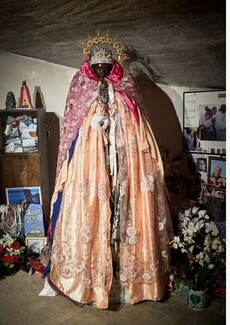
Pat was born in France in a Gypsy camp in Fos Su Mer, her grandmother was born in Hungary and her father in Germany. Pat lived in a camp in Port Louise until the 1980s when the government moved them into houses.
Pat’s Grandmother, Rosie, was taken by the Nazi soldiers from a Romany encampment in Hungary when she was just 14 years old. She was forced to work in a concentration camp using her skills as a seamstress. Near the end of the war, she was liberated by Russian soldiers and left in no-man’s land. It was there that she met Janos, her future husband. They had two children in Germany, then made their way by foot and with a horse and cart to the south of France, where they had a third child.
Rosie lived to be 95 years old and passed away just two years ago. Rosie only ever spoke about The Holocaust once, as all her family and the Roma in the camp were burnt to death.
Pat comes to Saintes Marie Del La Mer to speak to Saint Sara, to feel close to her traditions, her culture, and her ancestors.
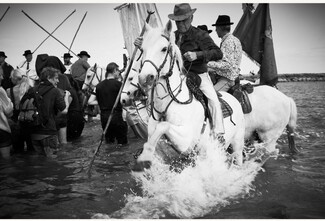
Pat kindly drops me at the station and tells me; “Write it, if you don’t no one else will,” and I catch the last train out of Arles.
By Kerensa Smith
Videos by Kerensa Smith
Photographers: Debbie Todd MA and Artúr Čonka
(Lead photograph by Debbie Todd)
Listen to Artúr Čonka's Heart and Soul radio programme here: BBC World Service - Heart and Soul, Saint Sara: Patron saint of the Romani people
Do you want to help build the future of an independent Travellers’ Times? Take part in our short online survey to let us hear your voice and be entered in a prize draw to win £300! https://bit.ly/TT_Big_Survey